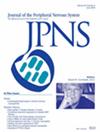Diagnosis and Management of Multifocal Motor Neuropathy in the United Kingdom: A Multicentre Survey
Abstract
Background
We conducted a survey to determine the current diagnosis and treatment of multifocal motor neuropathy (MMN) in the United Kingdom.
Methods
Demographic, diagnostic and treatment data were collected at nine UK neuroscience centres.
Results
Ninety-five subjects were included. Mean age at diagnosis was 49.9 years (SD: 11.4). Males were more commonly affected (ratio: 1.9:1). Diagnostic delay was > 1 year from the time of first neurological assessment, in > 50% of subjects. Applying modified EFNS/PNS 2010 criteria, 69/95 (72.6%) had definite MMN, 10/95 (10.5%) had probable MMN, 15/95 (15.8%) had possible MMN, through treatment responsiveness in 9/15 (60%) and 1/95 (1.1%) did not meet criteria. Cerebrospinal fluid examination, anti-GM1 antibody testing and brachial plexus magnetic resonance imaging were non-contributory. Immunoglobulin response was reported in 90/92 subjects (97.8%), and 84/90 (93.3%) remained on treatment after a mean of 9.4 years, at a mean dose of 26.2 g/week (range: 4–114). Mean long-term immunoglobulin dose was 30%–60% higher than reported in neighbouring countries. Contrasting with previous reports of frequent loss of immunoglobulin response and functional decline, our physician-assessed long-term outcome was favourable (stable or improving) in 74/84 (88.1%) treated subjects.
Interpretation
MMN diagnosis and treatment in the United Kingdom are comparable to that of neighbouring countries and follow existing guidelines. Diagnostic delay after the first neurological assessment is considerable. Electrophysiology shows at least one definite/probable conduction block in nearly 90% of cases. The mean long-term immunoglobulin dose is higher in the United Kingdom than reported elsewhere, although highly variable. Whether higher doses of immunoglobulin may improve long-term outcomes requires further study.

 求助内容:
求助内容: 应助结果提醒方式:
应助结果提醒方式:


